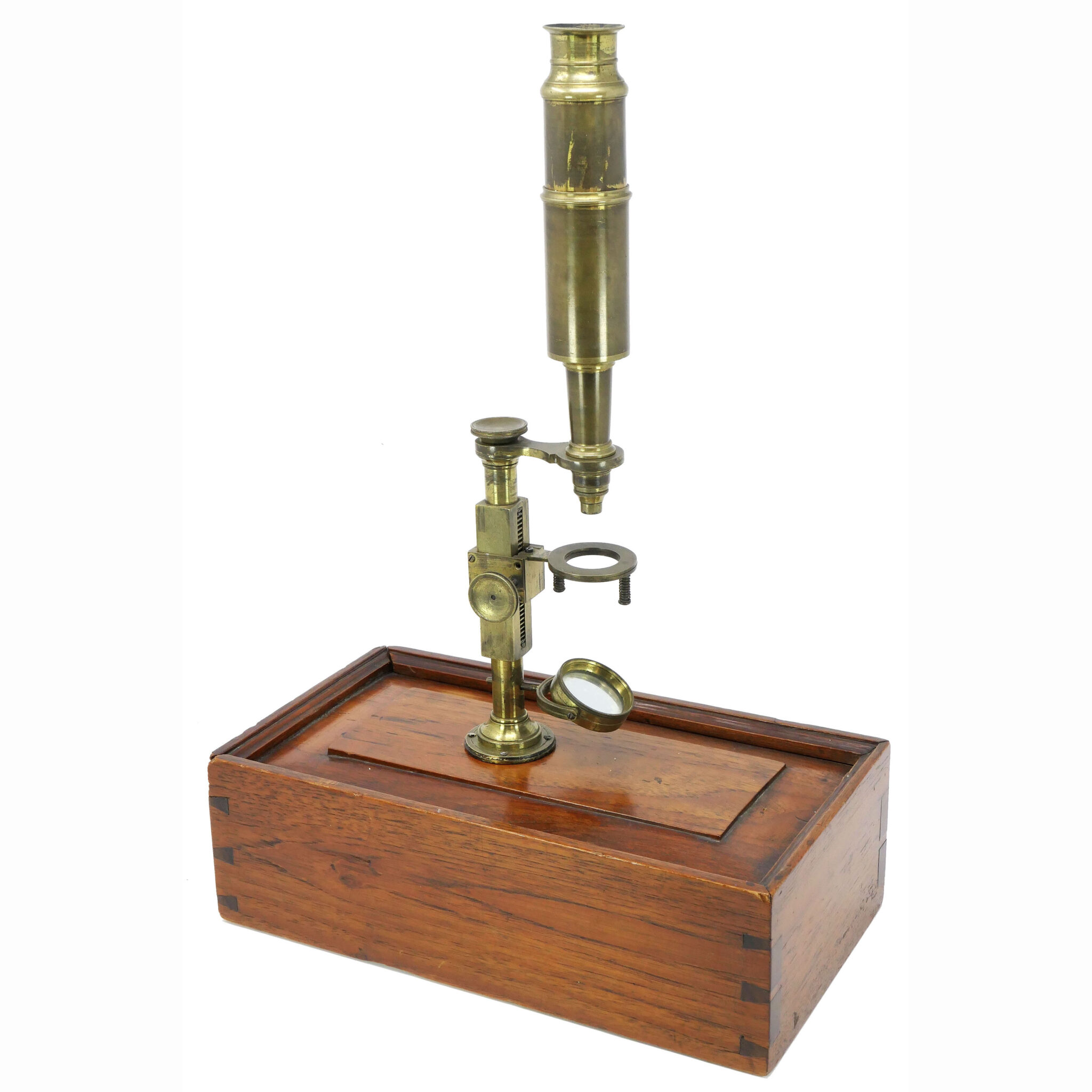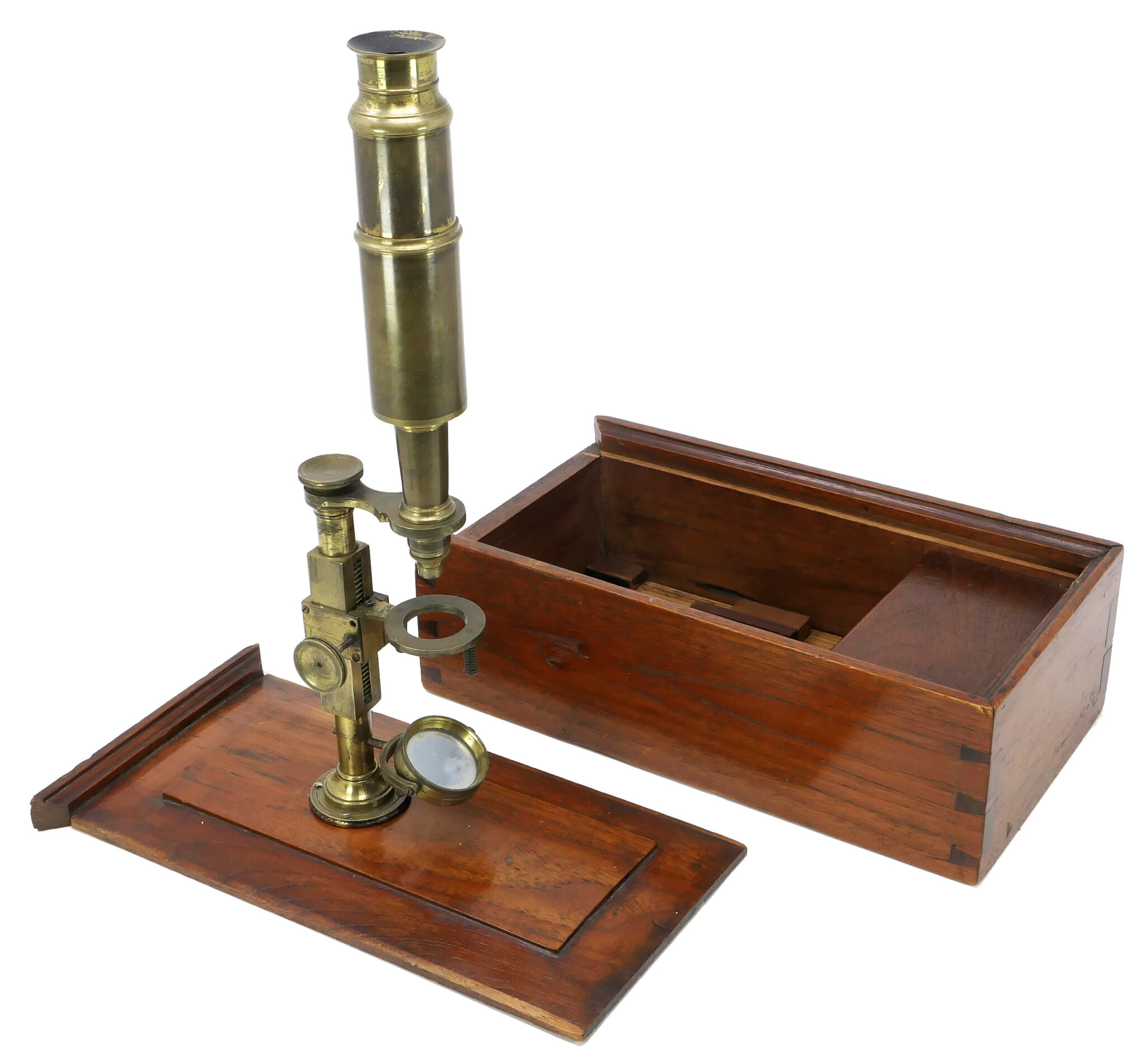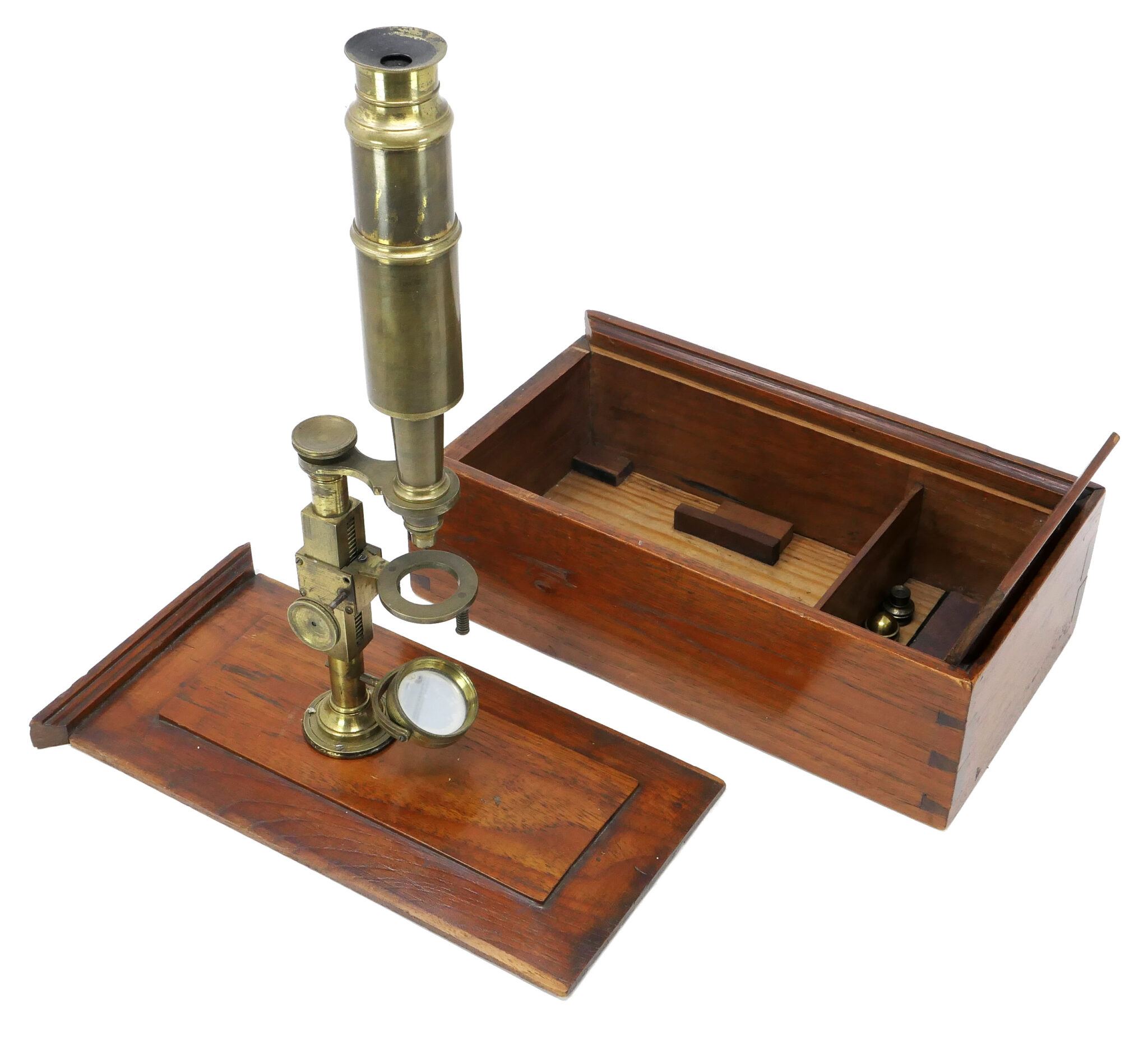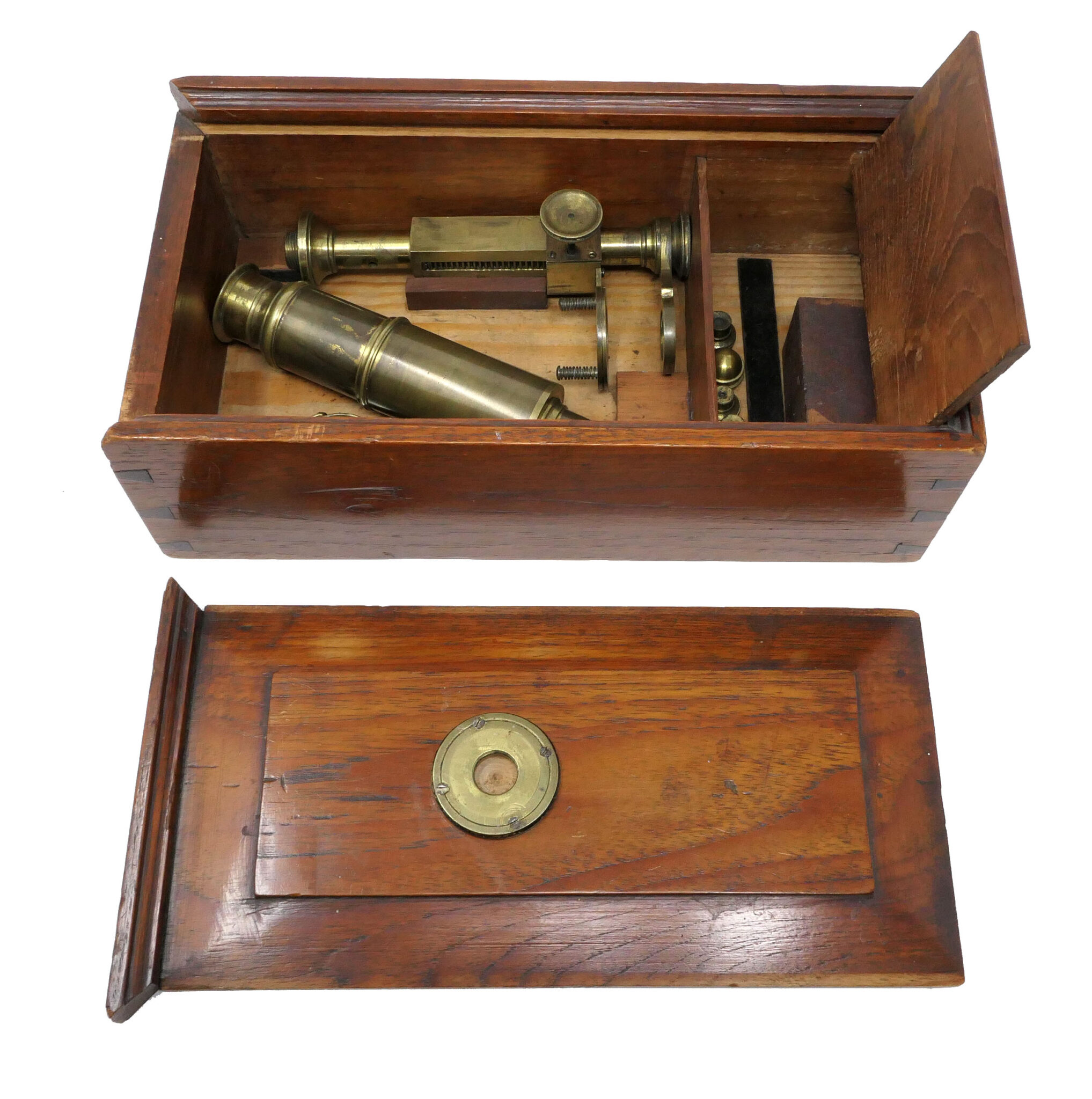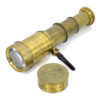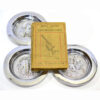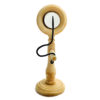Rare Cuff-Styled Microscope by a Dutch maker, ca. 1760
Stock Number: FG_25010
£1200
The overall design of this cuff-styled, case-mounted microscope most likely reflects a Dutch origin, crafted by a prominent master such as Lommers or Huysen/Huijsen. However, there is significant variability in the designs of rarely signed instruments from each of these makers, making it challenging to attribute unsigned items to any one of them.
Dimensions
Case: 29x16x9 cm, total hight when standing 42 cm, weight 2 kg.
Circa
1760
Country of manufacture
Other
Description
The original Cuff microscope emerged around 1745 and gained significant popularity, largely thanks to the efforts, writings and patronage of Henry Baker. Since the microscope was never patented—a complicated process in the 18th century—numerous copies quickly appeared, made by other English manufacturers as well as by some continental European makers in countries where microscopes were popular, including France, the Netherlands and German Lands. These imitations retained the core concept of Cuff’s design while incorporating local ideas that had already influenced microscope construction in these regions. Notably, some of these designs often reflected the influence of the box microscope, which had been popular primarily in France since the early 18th century. These makers built upon the original model, enhancing it by replacing Cuff’s subtle focusing system with a more user-friendly rack-and-pinion focusing mechanism and eliminating the original Hevelius screw, which was unnecessary due to the limited magnification and resolution capabilities of 18th-century microscopes. While French maker, Claude-Siméon Passemant, generally adhered to Cuff’s original design, making only minor modifications, examples from the German Lands (such as Georg Friedrich Brander of Augsburg) and Dutch makers (such as Jacobus Lommers or Jacob Huysen/Huijsen of Utrecht) were more innovative, adopting the main idea of Cuff’s design while incorporating indigenous ideas that had already taken root in these countries. Dutch makers primarily took the idea that the brass parts of the microscope could be dismantled and stored in a wooden case, which served as the base for the instrument when in use. Only a limited number of examples of their signed microscopes are known, primarily held in the Museum Boerhaave in Leiden, the Golub collection and a few other public and private collections. These examples exhibit a high level of inter as well as intra variability while still adhering to the basic concept, indicating that each instrument was likely produced as a unique piece for a specific client, making it challenging to find exact signed similarities.
The design of the instrument clearly indicates that it is a Dutch product, crafted by a leading master instrument maker. However, the significance of the designs of the few signed instruments from these makers makes it challenging to attribute unsigned items to either of them. The microscope comes in an elegant wooden box, likely made of oak, resembling a pencil case with a sliding lid. This design allows the microscope to be stored separately or placed on top of the box, along with its accompanying accessories. The accessories are kept in a separate compartment within the box and include four objectives, with the one featuring the highest magnification protected by a domed brass cover.
Please refer to PAYMENT METHODS regarding P&P rules
Ask the Dealer
Dealer information
 Gilgamesh
Gilgamesh
Gilgamesh is a mythological hero from the ancient cultures of West Asia, who embarked on a journey in search of youth and eternal life. Fleaglass Gilgamesh is located in Israel. As an Emeritus Professor of archaeology, I have spent over four decades researching the material culture of the distant past, utilizing the microscope as a powerful research tool. For the past thirty years, I have collected microscopes from the first 300 years of this remarkable instrument's history and have studied the cultural context of their use.
What started as a passion has turned into an obsession, and I now cultivate a nearly unique collection of historical microscopes from West Asia. From time to time, I offer surplus or particularly interesting items from my collection for sale. I am happy to provide free advice to any interested collector. If you would like to receive photos, information, and bibliographic references, or if you wish to discuss the details of the items I have for sale, please feel free to reach out.



